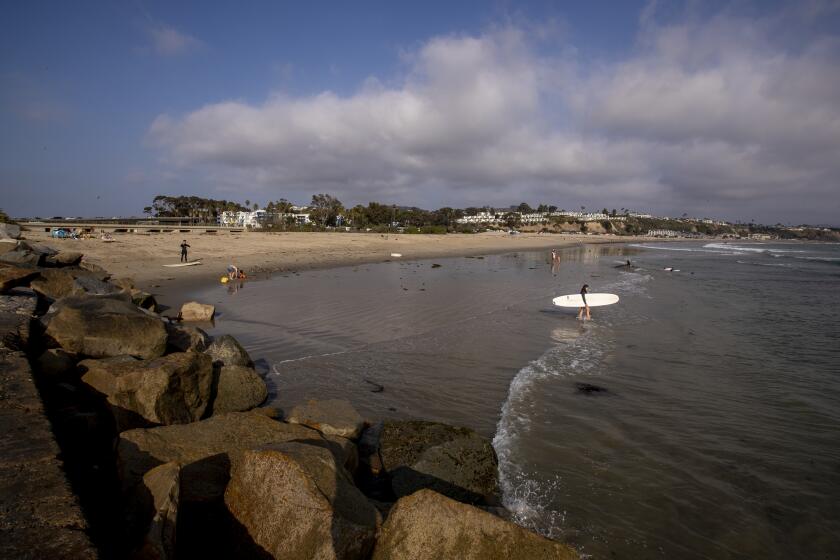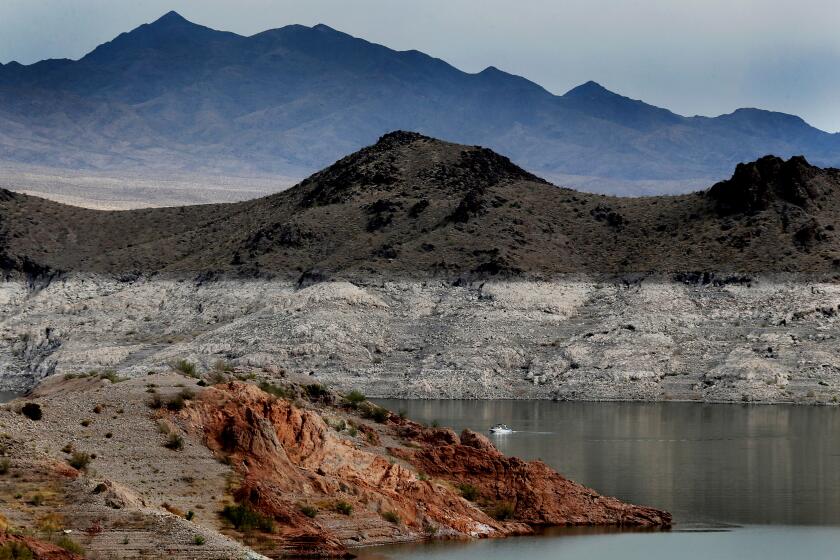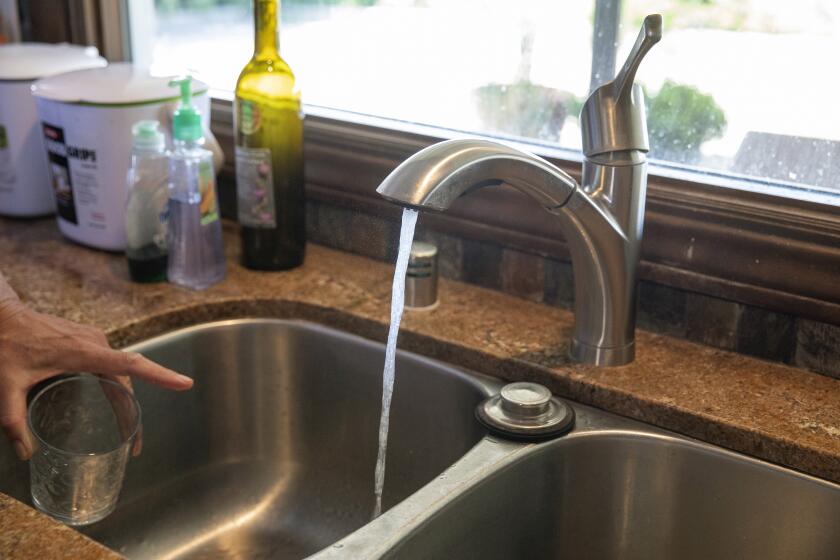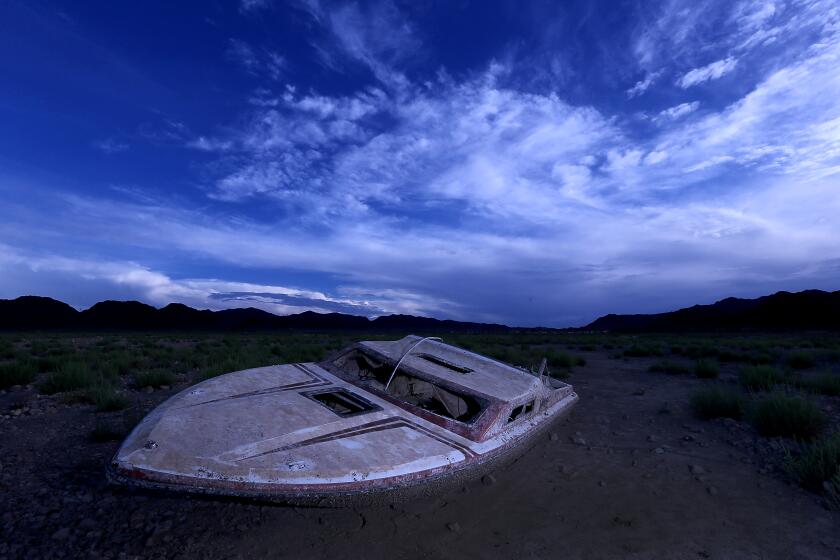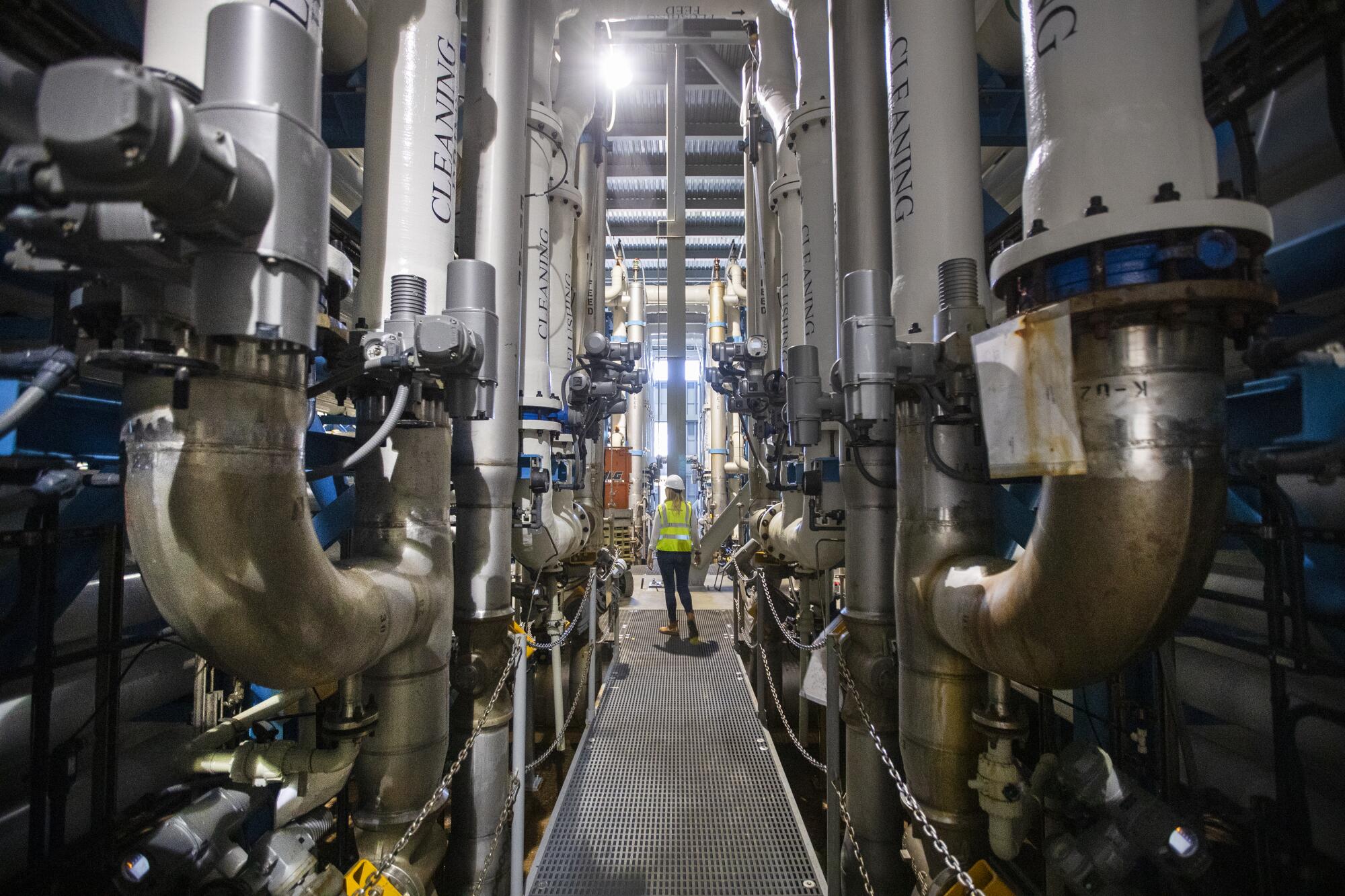
- Share via
For decades, environmentalists have decried ocean desalination as an ecological disaster, while cost-savvy water managers have thumbed their noses at desal’s lofty price tag.
But as the American Southwest barrels into a new era of extreme heat, drought and aridification, officials and conservationists are giving new consideration to the process of converting saltwater into drinking water, and the role it may play in California’s future.
Although desalination requires significant energy, California’s current extended drought has revived interest in the technology. Experts are already experimenting with new concepts such as mobile desalination units and floating buoys, and at least four major plants will soon be operational along the state’s coastline.
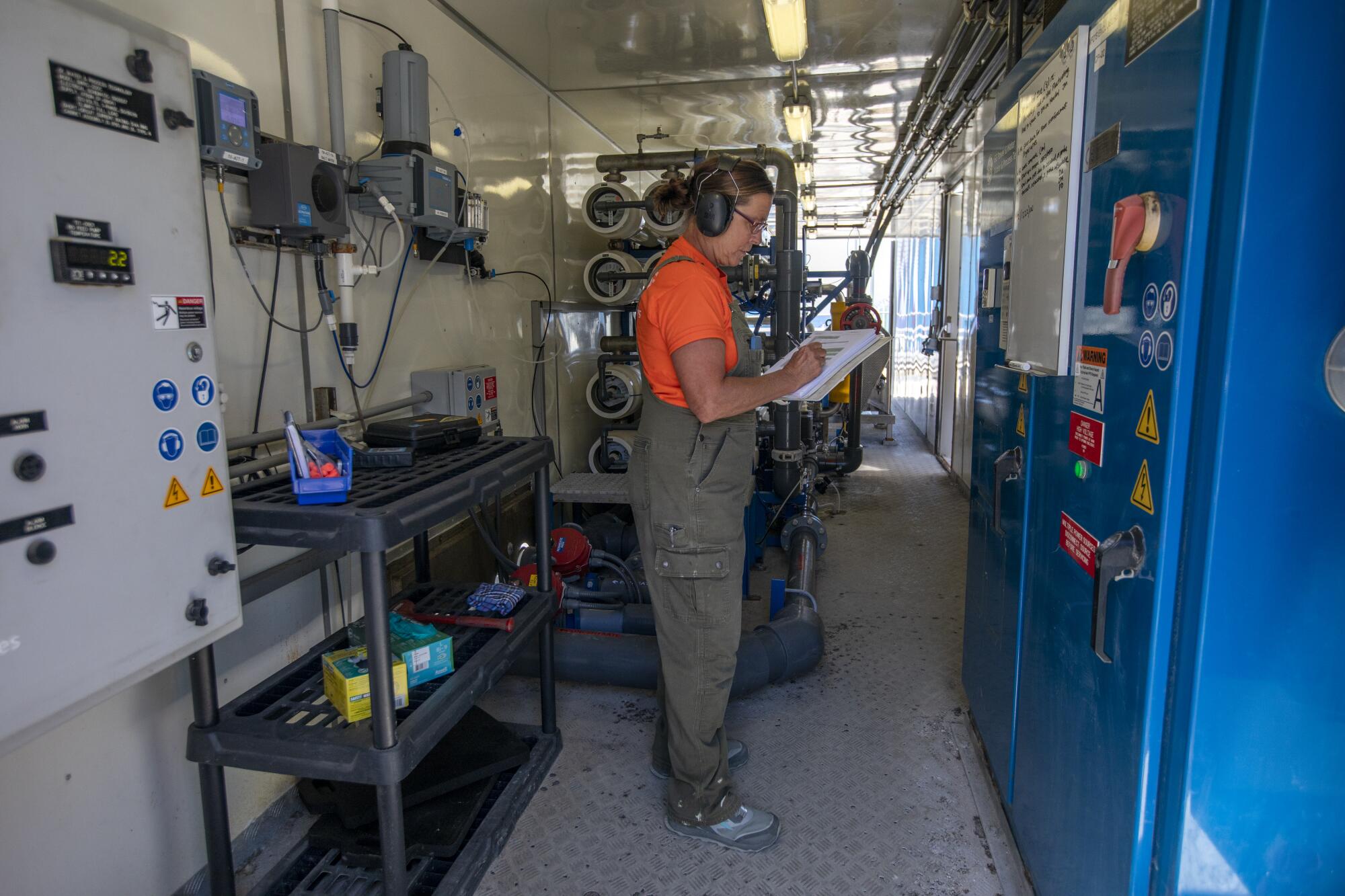
David Feldman, director of Water UCI at UC Irvine, said desalination could eventually provide “somewhere between 10% and half” of California’s potable water — with one caveat.
“Before we can even estimate what percentage of California’s potable water would come from desal, we’re going to have to consider whether or not water agencies feel confident that they have exhausted other less expensive and less energy-intensive options,” said Feldman, who is also a professor of urban planning and public policy at the university.
“In certain communities, desal may be your best option. On the other hand, it may be your second or third best option in terms of affordability, in terms of overall cost, in terms of public acceptability with respect to aesthetics and land use,” he said.
Citing global warming, California Gov. Gavin Newsom has unveiled a new water strategy to conserve, capture, recycle and desalinate supplies.
Indeed, desalination is not without downsides. In addition to high energy costs, the process can harm marine life, which can get trapped in pump systems that draw ocean water.
And then there is the brine — the salty, sludgy byproduct of desalination that typically gets released back into the ocean at the end of the process. A global survey of desalination in 2019 found that plants produce about 5 billion cubic feet of salty brine every day — 50% more than previous estimates.
High concentrations of brine can reduce oxygen and increase toxicity in marine environments. That’s caused some to worry about what what decades — or even centuries — of desalination could do to the ocean.
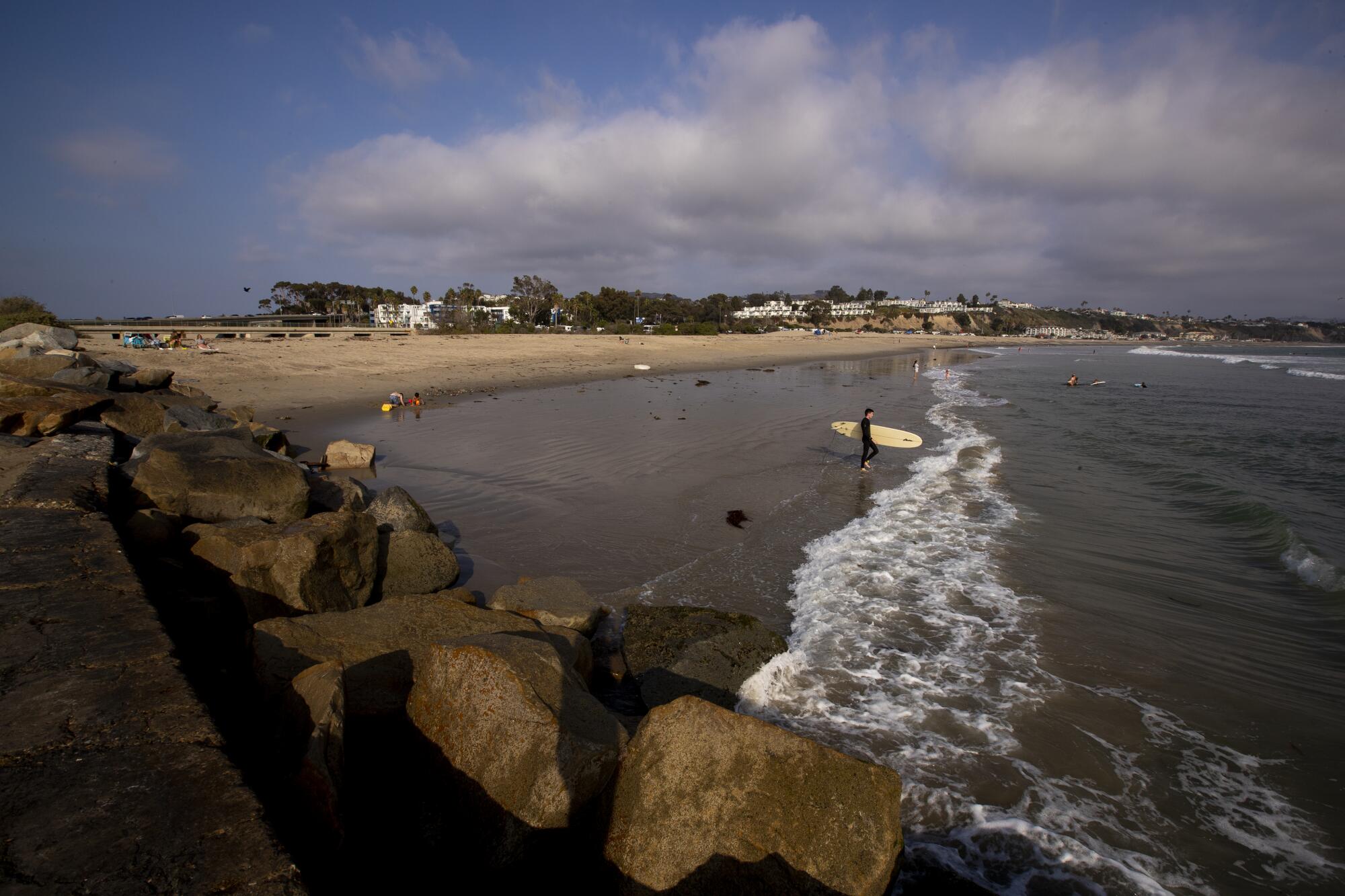
“Ocean water is going to be collected daily and dumped daily. What does that look like for future generations?” said Lydia Ponce, an activist with the Society of Native Nations. Ponce was a vocal opponent of a proposed desalination plant near Doheny State Beach in Orange County, which the California Coastal Commission recently approved.
Unlike the rejected Poseidon desalination plant, Doheny will tie into a municipal system and feature a better environmental design, officials said.
Experts are working to solve many of desalination’s challenges, however. The Doheny plant, for example, will draw seawater through slanted intake wells that run beneath the sea floor. Since they avoid contact with open water, officials say the wells will nearly eliminate the chances of marine life being sucked into intake pipes.
The facility also plans to “commingle” its brine with South Coast Water District wastewater pipes, diluting it before expelling about two miles out to sea. Though the harm from brine is not completely eliminated, the Coastal Commission said the method was environmentally preferred, and officials say it might serve as a model for future operations.
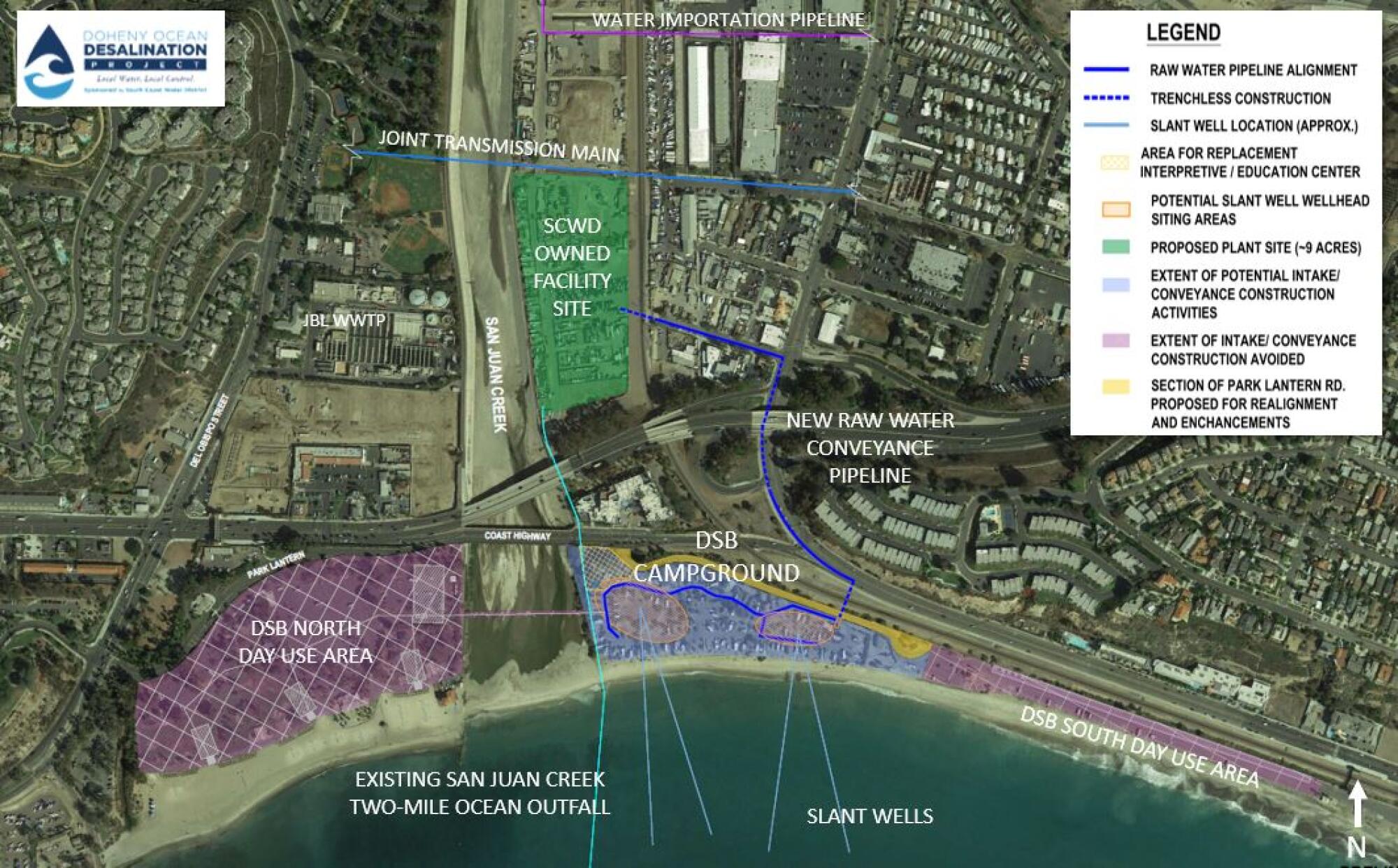
But desalination in California remains a lightning rod for controversy, and the Doheny plant raised significant opposition. Among the project’s opponents was Conner Everts, co-chair of the Desal Response Group, who said he thinks desalination has no place in California’s water supply.
“The ocean is more fragile than it used to be with climate change,” Everts said “It’s not the ‘endless reservoir’ as they call it — it’s a fragile ocean and the plants are industrializing but not resolving our problems. They’re creating another set of problems.”
Everts said it makes no sense for water agencies to be considering desalination when Gov. Gavin Newsom has yet to mandate the kind of sweeping statewide water restrictions his predecessor, Jerry Brown, did during the previous drought.
“All of those things are immediate, and that’s what we should be investing in — not these kind of pipeline fantasies of these water supply boondoggles,” he said.
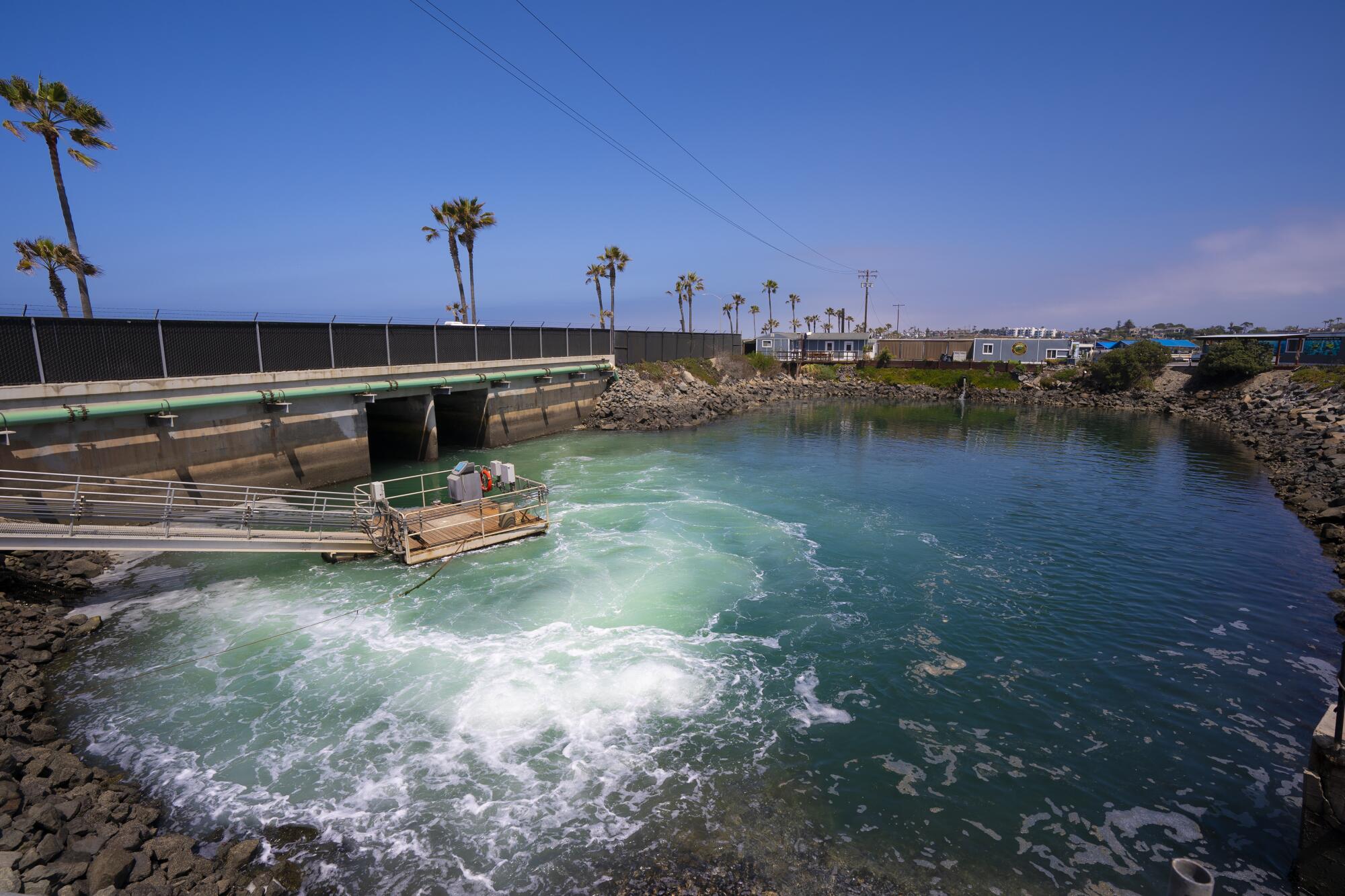
Recurring drought and rising temperatures have already begun to alter the landscape of California and the American Southwest, researchers warn.
Beyond the environmental impacts, economics have also discouraged widespread use of desalination.
Not only does it take significant capital investment, but desalination also requires an enormous amount of energy to push saltwater through filtering membranes at a very high velocity, said David Mitchell, a water economist with the group M.Cubed and an adjunct fellow with the Public Policy Institute of California.
“That’s sort of the Achilles’ heel of desal — its operating cost is very high because of its energy requirement,” Mitchell said.
But the price gap between desalination and other supplies is shrinking — particularly because the cost of traditional sources has been rising due to tightening supplies, increased treatment requirements, high pumping costs and other factors, he said.
The Metropolitan Water District of Southern California, a wholesaler for 26 regional agencies, sells treated water at roughly $1,200 per acre-foot, Mitchell said. (An acre-foot is approximately 326,000 gallons.) The median cost of producing desalinated water is “in the neighborhood of $2,000 an acre-foot,” he said.
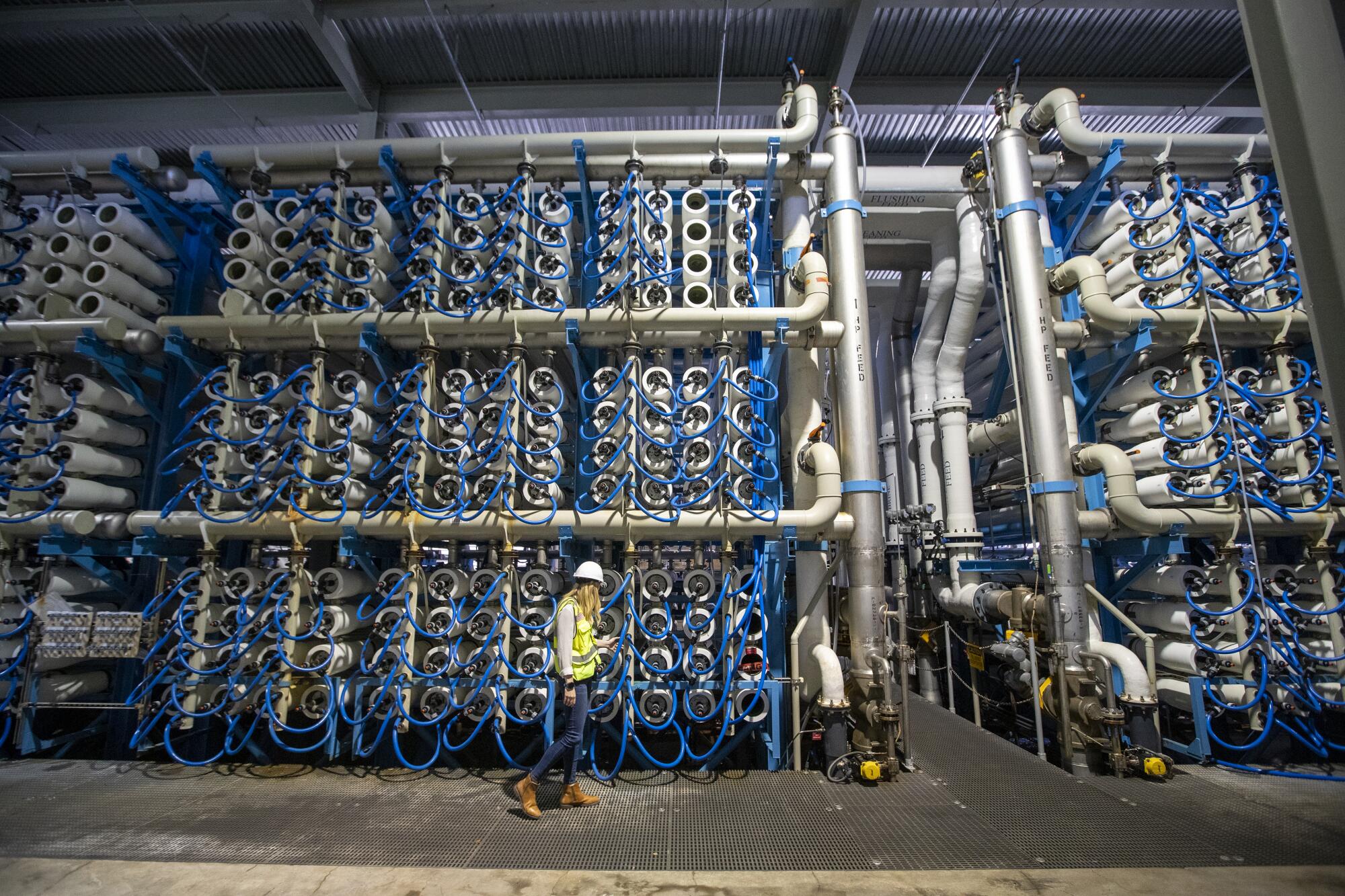
Though the higher cost might be worthwhile during dry periods, it becomes less so in wet years when other supplies are more ample, however.
“If you’re looking at a large desal investment and then you’re going to operate it, say, one out of three years, that makes it a very expensive proposition,” Mitchell said. “It’s sort of like buying insurance — you’re buying a pretty expensive insurance policy.”
Still, Mitchell said he thinks desalination has a place in California’s water portfolio,and noted that it has already proved viable in Australia and Israel, which gets nearly 90% of its drinking water from a handful of desalination plants near the Mediterranean and Red seas.
“Some communities could do the math and figure out desal makes sense financially for them,” he said. “Whether that translates into a desal facility is a whole other question as to whether or not they can obtain the necessary regulatory approvals, permits and community buy-in.”
The Water Rate Assistance Program, which Gov. Gavin Newsom vetoed last month, would have created a water affordability program for low-income households.
Some experts are already exploring new ways to overcome those hurdles. Santa Barbara-based SeaWell and its subsidiary, Ocean Portal Water Co., are working with Vandenberg Space Force Base to test the concept of floating desalination buoys. When launched, a single ocean buoy will be able to produce just short of a million gallons of drinking water a day, according to Ocean Portal President Peter Stricker.
“We really approached this from the standpoint of, what’s a better way to do desal than is currently being done so that we can get past some of the issues that desal represents,” Stricker said. “One of them is being modular and easy to deploy, another one is the environmental impacts. Another big part is energy efficiency.”
While coastal plants require energy to pull ocean water into their facilities for treatment, the large, lighthouse-shaped buoys will have the advantage of producing desalinated water directly in the ocean, so only the finished product would need to be piped to shore, Stricker said. They will also use one-millimeter wire filtration screens and low-velocity intake to prevent “sucking in excessive amounts of marine life,” and the brine will be discharged high in the water column so that it mixes with the current as it sinks.
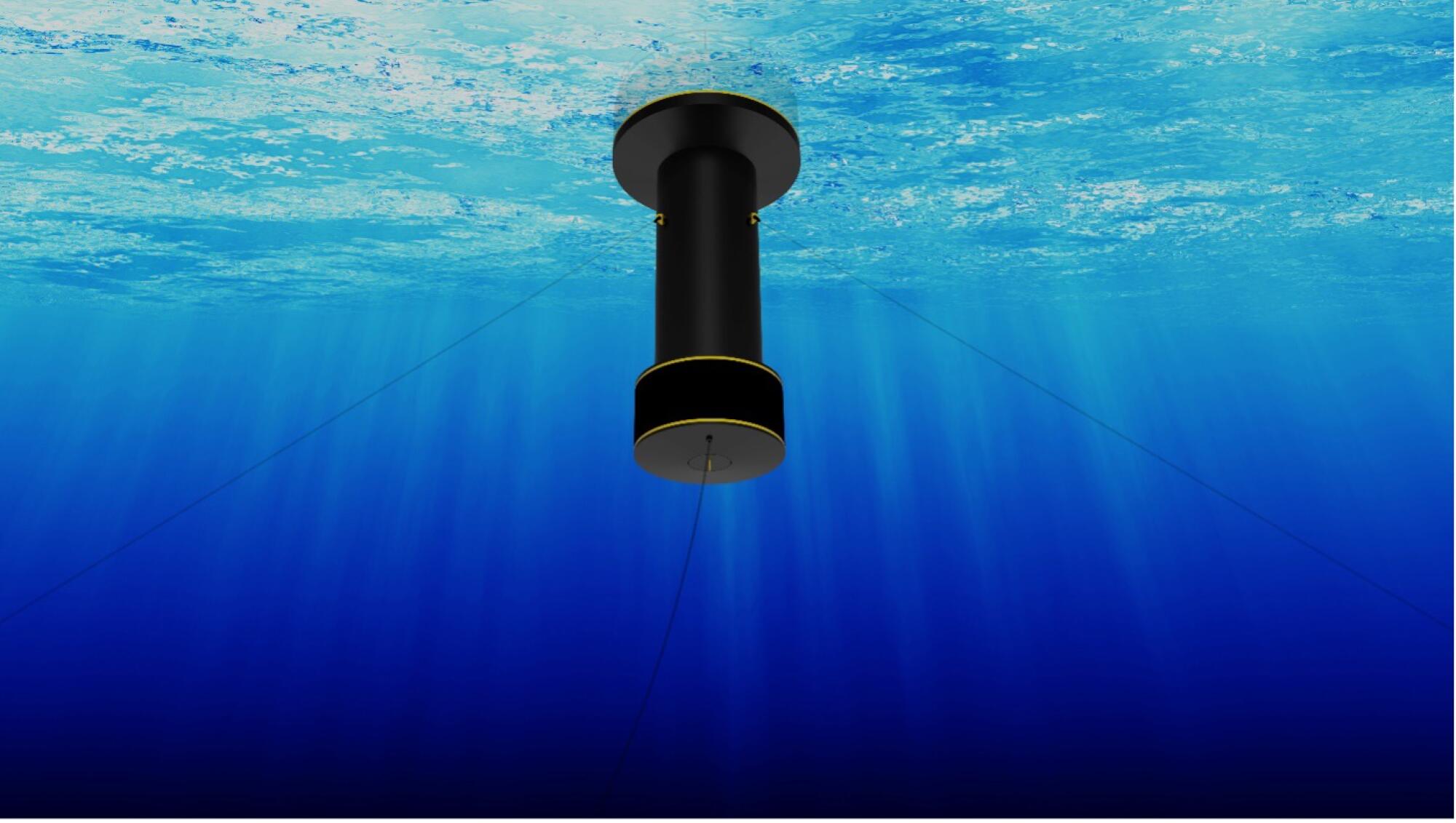
“We’ve gotten a very enthusiastic response on this approach to being able to discharge the brine and have it assimilated into the ambient environment very quickly,” he said.
Some environmental groups in the area weren’t yet sold on the concept.
“Even when you use a one-millimeter [screen], which is the smallest, you still take in plankton,” said Charming Evelyn, chair of the water committee for the Sierra Club’s Angeles Chapter. “So you are still destroying marine life and larvae. And in terms of the brine, brine is just toxic, so honestly, I don’t care how you dispose of it. Science has shown that brine is an issue.”
Stricker said boosting coastal supplies could have the added benefit of freeing up more deliveries for areas farther inland, which are often too far and at too high an elevation to feasibly receive desalinated ocean water.
As reservoirs decline on the Colorado River, California water agencies are under pressure to shoulder a substantial part of the inevitable cuts.
Although interior parts of California are too distant from the coast to make use of desalinated seawater, the technology is being used there to treat contaminated water from rivers and aquifers.
Yoram Cohen, a desalination expert and professor of chemical and biomolecular engineering at UCLA, is running a pilot program of small-scale, remotely run desalination units in the Salinas Valley, where groundwater is often contaminated with salt and other chemicals.
“You use the same technology of desalination, which is basically reverse-osmosis membranes, and that takes out the salt but it also takes out the nitrates [and] other contaminants that may be in the water as well, such as pesticides,” Cohen said. “You purify and you desalt at the same time.”
Cohen explained that inland salinity can be the result of agricultural runoff or simply just topography: As snowmelt, rainwater and other water sources evaporate, they leave behind salt, especially in valley areas without good drainage.
The desalination units fit in small sheds and can treat up to 4,000 gallons a day — enough for a very small rural community that may not have the funds or resources needed to connect to a larger municipal system. The process does create some residual contaminants, but it’s less than that of desalted seawater and can be disposed of in septic tanks. Cohen said it’s a promising solution not only for remote areas, but pretty much anywhere in the state.
“What we’re looking for is a technology to increase our water portfolio — whether it’s for removing salt, whether it’s for taking water that we can just purify and then use,” he said.
California also hosts about 20 brackish water plants which can desalinate slightly salty water from rivers, aqueducts and other sources. The city of Antioch, for example, broke ground on a brackish water desalination plant last year. Officials say the facility will be helpful at times when San Joaquin River supplies become more saline due to climate change, sea level rise and projects in the river delta. When completed, the plant will provide about 30% of Antioch’s annual supply, according to the city.
After hours of intense debate Thursday, coastal regulators have rejected Poseidon Water’s proposal to build a desalination plant in Huntington Beach.
That speaks to the other main driver of desalination in California: need. The state is facing its fourth year of drought, and climate change is upending patterns of rainfall and snowpack that once provided reliable water for the state. Officials slashed State Water Project allocations for California water agencies to just 5% this year, while federal officials have said painful cuts are imminent from the Colorado River, long a linchpin of the entire region’s supply.

Garry Brown, founder and president of the Orange County Coastkeeper, spent nearly 20 years fighting against a proposed desalination plant in Orange County — the Poseidon plant in Huntington Beach — which was ultimately rejected by the Coastal Commission in May because of dangers to marine life and other issues. But even he signed off on the technical design of the Doheny plant.
“Coastkeeper has always taken the position that we’re not against ocean desal but look at all the options, and ocean desal is a last-resort option,” Brown said. “We think the future of water in California is more capture and recycle.”
Feldman, of UC Irvine, agreed, saying it’s important for the state to maintain a diversified water portfolio that includes reuse, rainwater harvesting and conservation so as not to put all of its “eggs in one basket.”
“Rather than try to identify a panacea, we should ask ourselves a series of questions,” he said. “What makes most sense technologically, economically, risk-wise and public acceptability-wise for our needs?”
More to Read
Sign up for Essential California
The most important California stories and recommendations in your inbox every morning.
You may occasionally receive promotional content from the Los Angeles Times.

